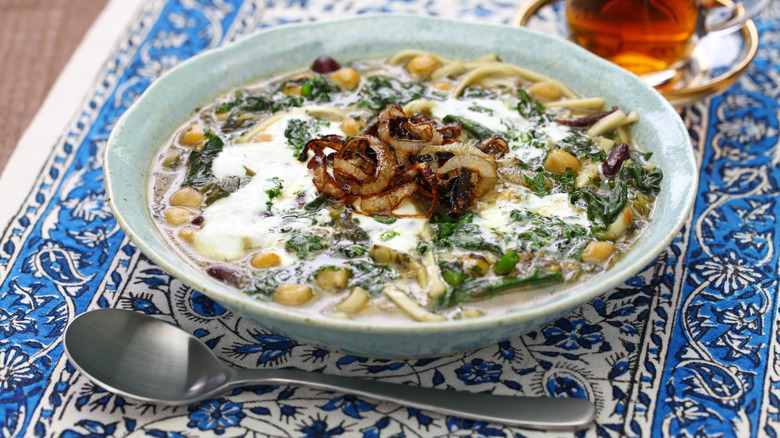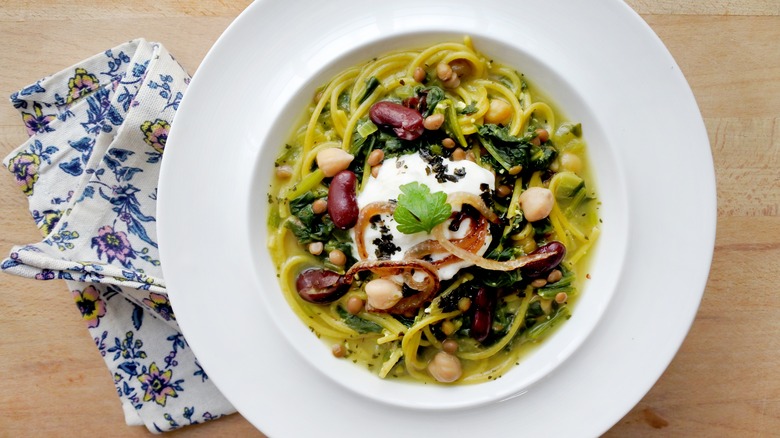The Symbolism In Your Bowl Of Ash Reshteh
We may receive a commission on purchases made from links.
Do you celebrate Nowruz? Known as the Iranian or Persian New Year, the holiday marks the start of spring and is celebrated from the beginning of the Spring Equinox, which falls on March 20 this year, and for the next 13 days, according to Bon Appétit. Over the course of the holiday, many Silk Road countries, including Iran, Afghanistan, Pakistan, India, and Turkey, mark the occasion with feasting, visiting with friends and family, and giving each other gifts (via Surf Iran).
Perhaps the most anticipated event of Nowruz, for many celebrants, is Chaharshanbe Suri, or the Festival of Fire. Technically a pre-Nowruz event, it's acknowledged on the Wednesday before Nowruz (this year, on March 16) when friends and family get together to light small bonfires and jump over them. According to Bon Appétit, this is a ritual that's said to clear any bad luck or personal problems in advance of the clean slate of the new year. As on many holidays, the occasion is marked with a particular dish, in this instance ash reshteh, a thick soup made with a mix of beans, lentils, spinach, noodles, and herbs. Perhaps not the most colorfully vibrant soup on the planet, Bon Appétit's Andy Baraghani, who is of Iranian descent, notes that ash reshteh "looks like hell but tastes like heaven." And the bowl is loaded with symbolism.
Ash reshteh offers a new year with good luck
It's not uncommon, during New Year's celebrations around the world, to serve and eat dishes that are supposed to boost good luck in the coming year. Think, for example, of the American South's Hoppin' John, a New Year's Day dish of porky black eyed peas, which represents coins and the hope for (literal) fortune in the coming year (via CNN Travel). Or of the Longevity Noodles eaten on Chinese New Year, which symbolize long life, according to the recipe blog The Woks of Life.
Ash reshteh is no exception. According to Taste Atlas, the long wheat noodles in the soup are eaten to bring good luck in the coming year. Bon Appétit's Andy Baraghani notes that the noodles represent the different paths a person is presented with in life, with My Persian Kitchen combining the two takes with the theory that the noodles symbolize great fortune and future success.
Whatever the soup represents, it's hearty, filling, and thick, the perfect fuel for gearing up for a long night of celebrating — or for recuperating forces the next day. Our version of ash reshteh, adapted from cookbook author Naomi Duguid's "Taste of Persia," features navy beans, lentils, and fava beans flavored with dried mint and ground turmeric — and, of course, plenty of noodles.

